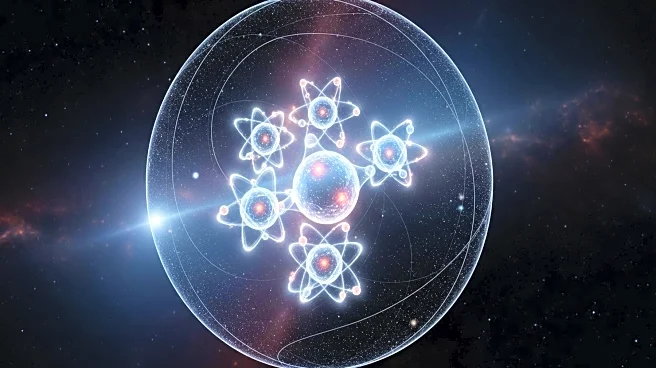What is the story about?
What's Happening?
MIT physicists have confirmed the existence of a phenomenon known as 'second sound', where heat moves in wave-like patterns similar to sound waves. This discovery was made by observing a quantum gas of fermionic lithium atoms, which allowed researchers to visualize the wave-like propagation of heat. The study, led by Martin Zwierlein, was published in the journal Science. The phenomenon was observed in a special state of matter called superfluid, where atoms flow without friction at extremely low temperatures. This research could provide insights into the behavior of electrons in high-temperature superconductors and the physics of neutron stars.
Why It's Important?
The confirmation of 'second sound' has significant implications for understanding heat transfer in materials, particularly in states of matter like superfluids and superconductors. This could lead to advancements in energy transmission technologies and improve our understanding of complex systems such as neutron stars. The ability to visualize heat movement as waves opens new avenues for research in quantum physics and material science, potentially leading to innovations in how we manage and utilize heat in various applications.
What's Next?
Future research will likely focus on exploring the practical applications of 'second sound' in technology and industry. Scientists may investigate how this phenomenon can be harnessed to improve energy efficiency in electronic devices or develop new materials with enhanced thermal properties. Additionally, further studies could explore the implications of this discovery for understanding other quantum phenomena and their potential technological applications.
AI Generated Content
Do you find this article useful?















